Hello to you animation experts!
I've stumbled across Origami by Facebook that uses their Pop library for iOS.
All the tutorials (on their site + everywhere else online) seem to focus on mastering the Quartz Composer side of it. I'm interested in how to get the exported code (Click on the Origami icon in QC and choose Export iOS code.) into my iOS app.

So I started by downloading the "2D Waggle" example: 2D Waggle Example
Here's what the exported code looks like:
#import "ViewController.h"
#import <POP/POP.h>
#import <POP/POPLayerExtras.h>
@interface ViewController ()
@property (nonatomic) CGFloat popAnimationProgress;
@property (nonatomic) CGFloat popAnimationProgress;
@end
@implementation ViewController
// popAnimation transition
- (void)togglePopAnimation:(BOOL)on {
POPSpringAnimation *animation = [self pop_animationForKey:@"popAnimation"];
if (!animation) {
animation = [POPSpringAnimation animation];
animation.springBounciness = 5;
animation.springSpeed = 10;
animation.property = [POPAnimatableProperty propertyWithName:@"popAnimationProgress" initializer:^(POPMutableAnimatableProperty *prop) {
prop.readBlock = ^(ViewController *obj, CGFloat values[]) {
values[0] = obj.popAnimationProgress;
};
prop.writeBlock = ^(ViewController *obj, const CGFloat values[]) {
obj.popAnimationProgress = values[0];
};
prop.threshold = 0.001;
}];
[self pop_addAnimation:animation forKey:@"popAnimation"];
}
animation.toValue = on ? @(1.0) : @(0.0);
}
- (void)setPopAnimationProgress:(CGFloat)progress {
_popAnimationProgress = progress;
POPLayerSetTranslationX(self.layer.layer, POPPixelsToPoints(progress));
}
// popAnimation transition
- (void)togglePopAnimation:(BOOL)on {
POPSpringAnimation *animation = [self pop_animationForKey:@"popAnimation"];
if (!animation) {
animation = [POPSpringAnimation animation];
animation.springBounciness = 5;
animation.springSpeed = 10;
animation.property = [POPAnimatableProperty propertyWithName:@"popAnimationProgress" initializer:^(POPMutableAnimatableProperty *prop) {
prop.readBlock = ^(ViewController *obj, CGFloat values[]) {
values[0] = obj.popAnimationProgress;
};
prop.writeBlock = ^(ViewController *obj, const CGFloat values[]) {
obj.popAnimationProgress = values[0];
};
prop.threshold = 0.001;
}];
[self pop_addAnimation:animation forKey:@"popAnimation"];
}
animation.toValue = on ? @(1.0) : @(0.0);
}
- (void)setPopAnimationProgress:(CGFloat)progress {
_popAnimationProgress = progress;
POPLayerSetTranslationY(self.layer.layer, POPPixelsToPoints(-progress));
}
// Utilities
static inline CGFloat POPPixelsToPoints(CGFloat pixels) {
static CGFloat scale = -1;
if (scale < 0) {
scale = [UIScreen mainScreen].scale;
}
return pixels / scale;
}
And here is the code I've tried to use to interact with the generated stuff:
-(void)awakeFromNib
{
UIPanGestureRecognizer* pan = [[UIPanGestureRecognizer alloc] initWithTarget:self action:@selector(move:)];
[self addGestureRecognizer:pan];
}
static float firstX=0,firstY=0;
-(void)move:(id)sender {
[self bringSubviewToFront:[(UIPanGestureRecognizer*)sender view]];
CGPoint translatedPoint = [(UIPanGestureRecognizer*)sender translationInView:self];
if ([(UIPanGestureRecognizer*)sender state] == UIGestureRecognizerStateBegan) {
firstX = [[sender view] center].x;
firstY = [[sender view] center].y;
[self togglePopAnimationX:YES];
[self togglePopAnimationY:YES];
}
else if ([(UIPanGestureRecognizer*)sender state] == UIGestureRecognizerStateEnded) {
[self togglePopAnimationX:NO];
[self togglePopAnimationY:NO];
}
translatedPoint = CGPointMake(firstX+translatedPoint.x, firstY+translatedPoint.y);
//
if ([(UIPanGestureRecognizer*)sender state] == UIGestureRecognizerStateChanged) {
POPLayerSetTranslationX(self.layer, translatedPoint.x);
POPLayerSetTranslationY(self.layer, translatedPoint.y);
//[[sender view] setCenter:translatedPoint];
}
}
Suffice to say, this DOES NOT work :(
So I suppose my question is how do I initiate the animation?
What I'm trying to do is simulate the "Swipe" input patch in QC Origami (see screenshot)

If anyone has any ideas about what I'm doing wrong and how to call the animations correctly I would be most grateful.
Many thanks!